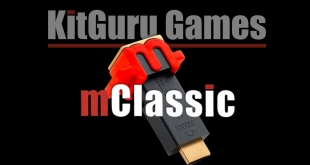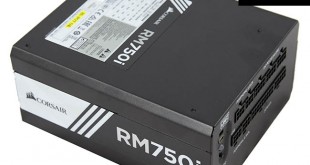
Corsair have just released their new range of RMi power supplies and we analyse their 750 watt model in this particular review today. If you visit the front page of Kitguru.net, you will see we also have published a review of their more expensive 1000 watt unit. This particular 750 watt PSU will target a wide demographic of enthusiast user, as it is priced at just under £110 inc vat in the UK. It carries 80 Plus Gold certification, is fully modular and has a switchable +12V configuration – offering single or multi rail operation. On a positive note, Corsair say they are using all Japanese 105c capacitors – something we always like to see.
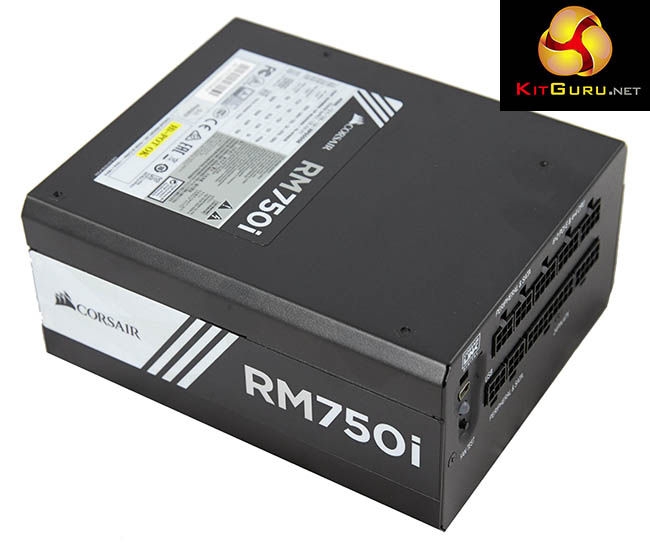
Corsair have incorporated a fluid dynamic bearing fan in all RMi Series power supplies, designed to reduce noise output. Additionally Corsair have spent time selecting the components to ensure coil whine isn't an issue – extremely important as this issue has been raised many times by KitGuru readers in recent months.
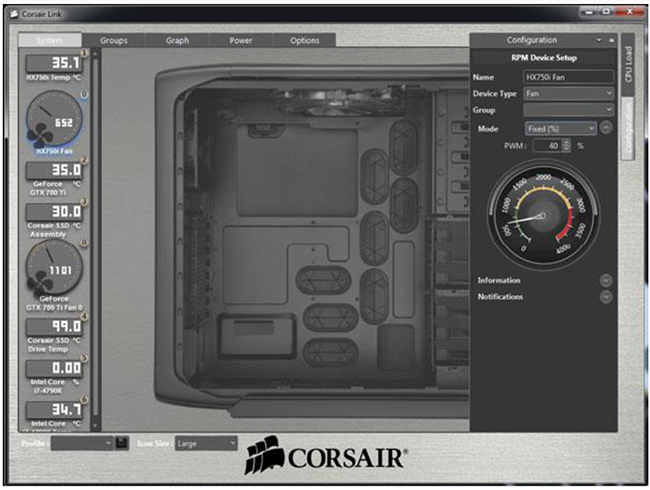
The RMi supply has a digital output for Corsair Link monitoring capabilities. There is also a Zero Fan mode to ensure minimum noise levels when the power supply is running with a low power demand – the fan should only spin when the unit is placed under heavy demand. Corsair Link version 3.1.5570 or newer is needed for full RMi support.
RMi vs. RM: The Similarities
- 80 PLUS Gold Certified: Less heat generated and lower operating costs
- Fully Modular Cable Interface: Allows users to only install the cables they require, thus reducing clutter and improving airflow
- ZeroRPM Fan Mode up to 40% Load: Near silent operation at low and medium loads
- Silent Component Selection: Stringent QC implementation minimizes “coil whine” issues
- LLC Resonant Mode Topology w/ DC to DC: Improves efficiency, voltage regulation and ensures compatibility with 4th Generation and newer Intel processors.
RMi vs. RM: The Differences
- 7 Year Warranty: Upgraded from RM’s 5 year warranty
- ALL Japanese Capacitors: Ensures long life and best in class performance throughout the life of the product
- Rated for Full Output at 50°C: 10°C higher operating temperature than RM at 40°C
- Fluid Dynamic Bearing Fan: Longer life than RM’s rifle bearing and lower noise than dual ball-bearing fans
- Digital Output for Additional Corsair Link Monitoring Capabilities: Adds features to RM’s Link capabilities, such as the ability to monitor power in, out, efficiency, output voltages and temperature, as well as DC load and fan speed
- Additional Corsair Link Control Capabilities: Create a custom fan profile and toggle +12V rail from multiple to single rail mode.
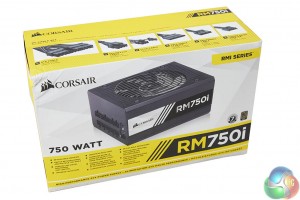
Corsair box artwork is instantly recognisable although I am not so keen on the yellow accenting for this range. It is only a box though, so who cares?
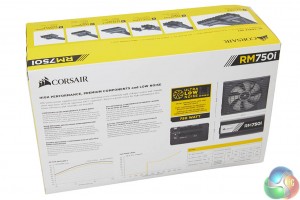
Some technical data is listed on the rear of the box including fan noise and efficiency levels.
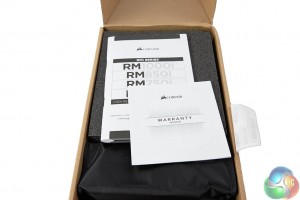
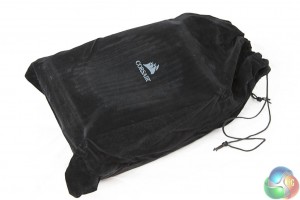
Inside the box the power supply is protected between two thick foam pads, and is wrapped inside a felt bag. We will look at this in more detail on the next page.
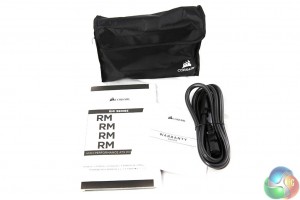
A regional specific power cable, literature on the product, and a bag of the modular cables.
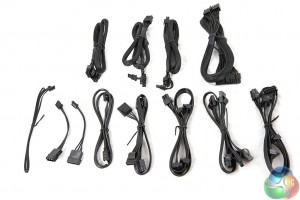

There are a mixture of sleeved and flat ribbon cables included with the RMi power supply and a total of four PCIe power cables – ideal for a dual SLI or Crossfire system build.
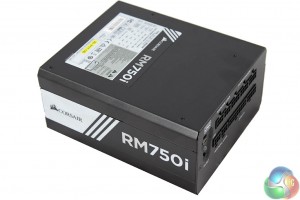
The Corsair RM750i follows the companies design ethic of keeping it ‘clean and simple' looking. I always like the appearance of their power supplies, and I was pleased to see the gaudy yellow colours on the box didn't carry over to the unit itself.
Finish quality is high and it passed our screwdriver test. This involves running the head of a Philips head driver down the side of the chassis with light to medium force. After all, how many times have you accidentally connected with a power supply during a system build?
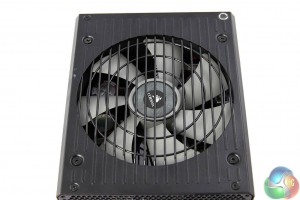
The large, pale coloured fan rests behind a metal grill. We will take a closer look at this shortly when we open the unit.
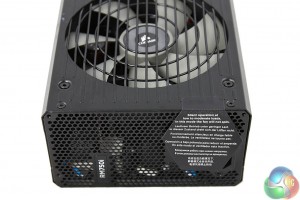
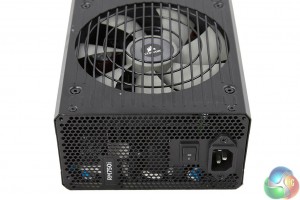
A sticker brings attention to the silent fan mode during low to moderate loads. When this is removed we can see one side of the unit is vented with a power connector and switch for operation.
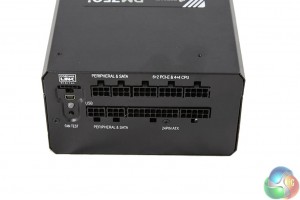
The modular bay is a two row implementation – clearly labelled to make the build phase as straightforward as possible. The digital link connector is located in a separate panel at the side. As the sticker explained – the fan in this unit is often not spinning at all under general load conditions – Corsair have therefore thoughtfully included a ‘fan test' button so the user can check the fan is actually working.
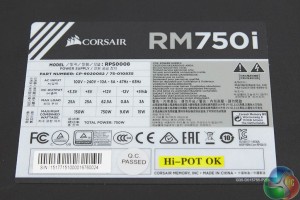
| Corsair RM750i in Single +12V Rail Mode | |||||
|
DC Output
|
+3.3V
|
+5V
|
+12V |
-12V
|
+5Vsb
|
|
Max Output
|
25A
|
25A
|
62.5A |
0.8A
|
3A
|
| Total Power | 150W | 750W | 9.6W | 15W | |
| 750W | |||||
| Corsair RM750i in Multiple +12V Rail Mode | |||||||||
|
DC Output
|
+3.3V
|
+5V
|
+12V1 | +12V2 | +12V3 | +12V3 | +12V5 |
-12V
|
+5Vsb
|
|
Max Output
|
25A
|
25A
|
40A | 40A | 40A | 40A | 40A |
0.8A
|
3A
|
| Total Power | 150W | 750W | 9.6W | 15W | |||||
| 750W | |||||||||
The Corsair Link software can change the RMi power supply DC output configuration from the default setting of multiple +12V rails to a single +12V rail. The RMi series can deliver all of their available power over the +12v rail.
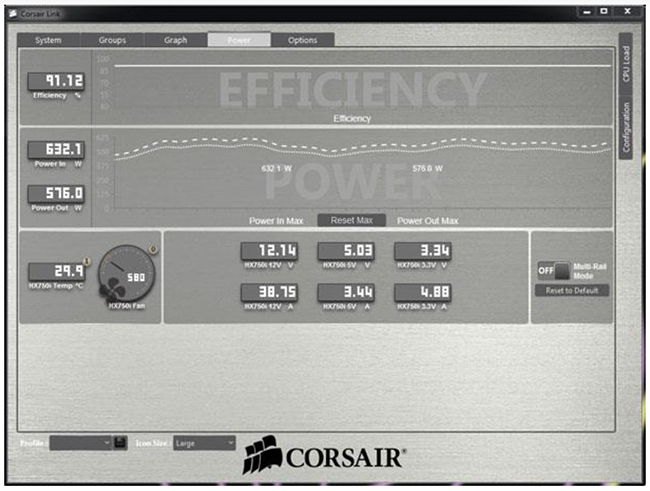
At the default setting, the RMi has over current protection (OCP) on all of the rails. Each of the 8 pin connectors used for CPU power and PCIe power delivery has a 40A OCP over the +12V. The six pin connectors for SATA and Molex +12V leads have collectively a 40A OCP, as does the two +12V leads on the 24 pin connector.
This OCP can be disabled within the Link software. You simply toggle the multi rail switch on the right to the ‘off' position. This will open up all the connectors to the PSU's full +12V capability.
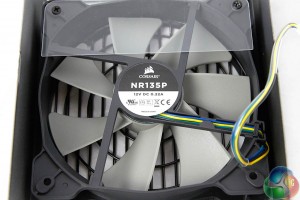
Corsair are using their NR135P fan inside the RMi Series 750W power supply. This fan has intake blades specifically designed to move a high volume of air through the power supply components with less noise than a conventional fan design. Corsair claim the fan blades are properly balanced to help reduce resonance at higher speeds. This fan incorporates fluid dynamic bearing to help prolong life and reduce noise further than a ball bearing or sleeve bearing design.
Corsair make the point that they have invested a lot of time into ensuring these units do not exhibit any ‘coil whine'. This can be caused by poor winding of a transformer or coil. Also the conducting and insulating layers of a capacitor can vibrate excessively if the components are not wound properly. These vibrations can lead to audible noise that many people class as ‘coil whine'.
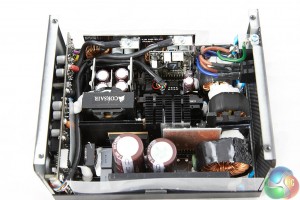
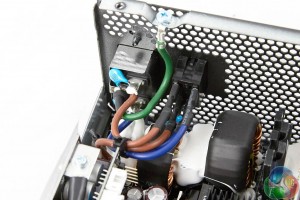
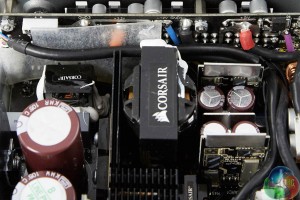
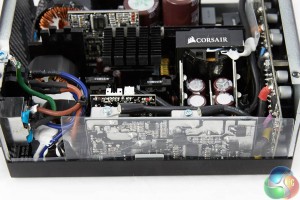
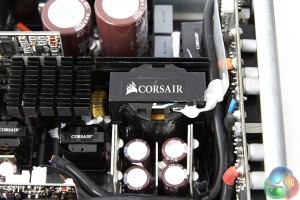
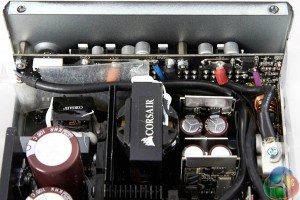
This is a CWT design and the build quality is actually very high. Soldering quality on the PCB and modular connection board is good. The 750W and 850W also have fewer PFC MOSFETs and lower power PWM MOSFETs than the 1000W unit which we have also reviewed today. The 750W also has fewer +12V output rectifier diodes than the 850W and 1000W.
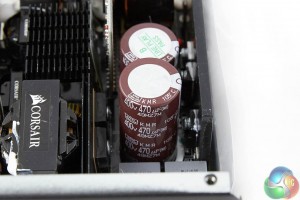
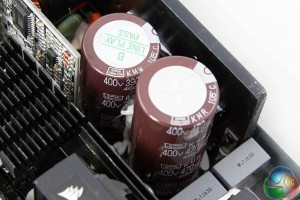
The power supply is using all Japanese capacitors in the primary and secondary stage. In the primary stage are two high grade 105C capacitors from Nippon Chemi Con – a 400V 470uF (KMR series) and 400V 390uF (KMW Series) unit. These are as good as it will get for a mainstream consumer unit.
On this page we present some high resolution images of the product taken in our professional studio with a Canon 1DX camera. These will take much longer to open due to the dimensions, especially on slower connections. If you use these pictures on another site or publication, please credit Kitguru.net as the owner/source.
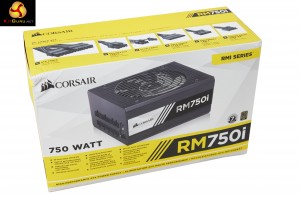
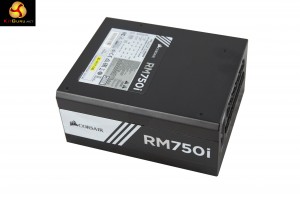
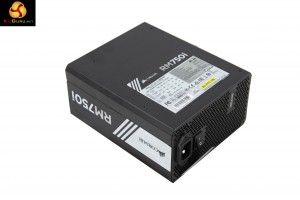
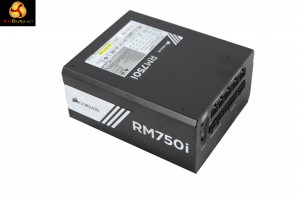
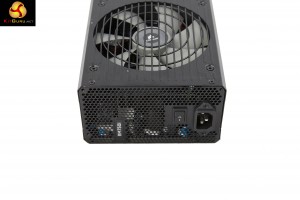
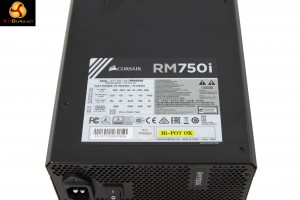
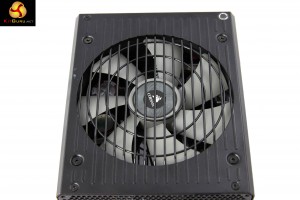
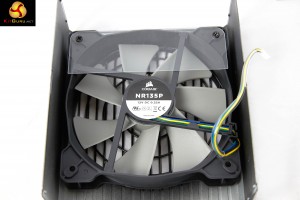
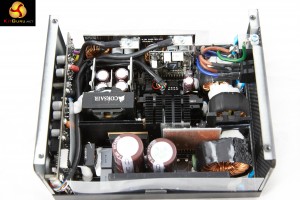
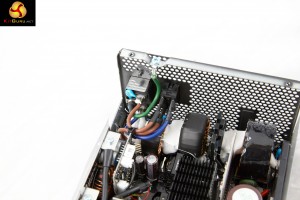
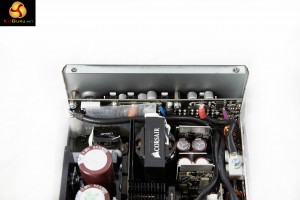
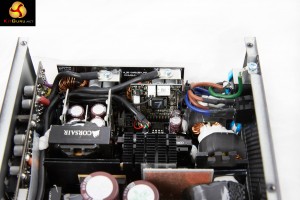
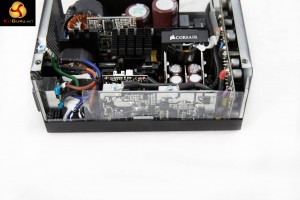
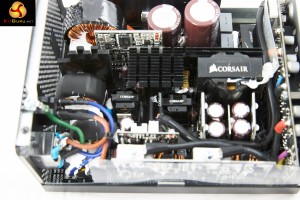
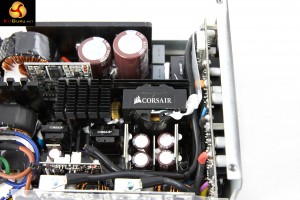
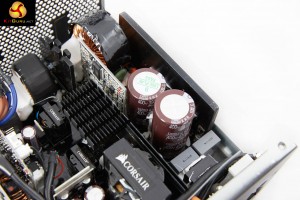
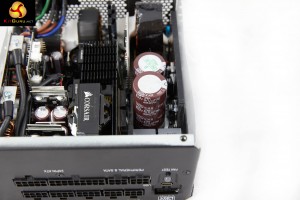
Correctly testing power supplies is a complex procedure and KitGuru have configured a test bench which can deliver up to a 2,000 watt DC load. Due to public requests we have changed our temperature settings recently – previously we rated with ambient temperatures at 25C, we have increased ambient temperatures by 10c (to 35c) in our environment to greater reflect warmer internal chassis conditions.
We use combinations of the following hardware:
• SunMoon SM-268
• CSI3710A Programmable DC load (+3.3V and +5V outputs)
• CSI3711A Programmable DC load (+12V1, +12V2, +12V3, and +12V4)
• Extech Power Analyzer
• Extech MultiMaster MM570 digital multimeter
• Extech digital sound level meter
• Digital oscilloscope (20M S/s with 12 Bit ADC)
• Variable Autotransformer, 1.4 KVA
We test with the +12V in single rail mode.
|
DC Output Load Regulation
|
||||||||||
|
Combined DC Load |
+3.3V
|
+5V
|
+12V
|
+5VSB
|
-12V | |||||
|
A
|
V
|
A
|
V
|
A
|
V
|
A
|
V
|
A | V | |
|
75W
|
1.24
|
3.36
|
1.19
|
5.05
|
4.95
|
12.08
|
0.50
|
5.03
|
0.20
|
-12.05
|
|
150W
|
2.16
|
3.35
|
2.83
|
5.05
|
10.07
|
12.05
|
1.00
|
5.02
|
0.30
|
-12.05
|
|
375W
|
6.17
|
3.35
|
6.06
|
5.03
|
26.17
|
12.03
|
1.50
|
5.02
|
0.50
|
-12.07
|
| 565W |
10.31
|
3.34
|
10.85
|
5.01
|
38.34
|
11.98
|
2.00
|
5.01 |
0.60
|
-12.07
|
|
750W
|
10.71
|
3.33
|
13.85
|
5.00
|
53.60
|
11.93
|
3.00
|
4.99
|
0.80
|
-12.08
|
Load regulation rates as very good indeed.
| Corsair RMi Series 750W | Maximum Load |
| 833W |
We managed to reach around 833W before the unit would shut down gracefully. Or another 83 watts over the rated maximum.
Next we want to try Cross Loading. This basically means loads which are not balanced. If a PC for instance needs 500W on the +12V outputs but something like 30W via the combined 3.3V and +5V outputs then the voltage regulation can fluctuate badly.
| Cross Load Testing | +3.3V | +5V | +12V | -12V | +5VSB | |||||
| A | V | A | V | A | V | A | V | A | V | |
| 734W | 1.0 | 3.35 | 1.0 | 5.05 | 60.0 | 11.88 | 0.2 | -12.05 | 0.50 | 5.03 |
| 154W | 15.0 | 3.32 | 15.0 | 4.99 | 2.0 | 12.09 | 0.2 | -12.06 | 0.50 | 5.02 |
The unit passes our Cross Load testing with both +5V and +3.3V rails holding steady. The +12V rail drops a little when hit quickly with 60A, but is nothing to worry about.
We then used an oscilloscope to measure AC ripple and noise present on the DC outputs. We set the oscilloscope time base to check for AC ripple at both high and low ends of the spectrum.
ATX12V V2.2 specification for DC output ripple and noise is defined in the ATX 12V power supply design guide.
|
ATX12V Ver 2.2 Noise/Ripple Tolerance
|
|
|
Output
|
Ripple (mV p-p)
|
|
+3.3V
|
50
|
|
+5V
|
50
|
|
+12V1
|
120
|
|
+12V2
|
120
|
|
-12V
|
120
|
|
+5VSB
|
50
|
Obviously when measuring AC noise and ripple on the DC outputs the cleaner (less recorded) means we have a better end result. We measured this AC signal amplitude to see how closely the unit complied with the ATX standard.
| AC Ripple (mV p-p) | ||||
| DC Load | +3.3V | +5V | +12V | 5VSB |
| 75W | 10 | 5 | 10 | 5 |
| 150W | 15 | 5 | 10 | 10 |
| 375W | 15 | 10 | 10 | 10 |
| 565W | 15 | 10 | 15 | 10 |
| 750W | 15 | 15 | 20 | 10 |
Ripple suppression is very good, and well within the industry tolerance levels. The +3.3V and +5V hit maximum levels of 15mV. The +12V rail peaks at 20mV when delivering the full 750 watts.
Edit: 6th July 2015: The +12V figure has been appended as we found that if we were using a USB oscilloscope,with the PSU’s Link interface plugged into a USB port on same system (such as a laptop) electrical noise from the laptop was introduced into the final result.
|
Efficiency (%)
|
|
|
75W
|
87.55
|
|
150W
|
91.20
|
|
375W
|
92.32
|
|
565W
|
91.66
|
|
750W
|
90.87
|
The power supply delivers great efficiency results, peaking at just over 92% at 50% load. This drops to around 91% at full load.
We take the issue of noise very seriously at KitGuru and this is why we have built a special home brew system as a reference point when we test noise levels of various components. Why do this? Well this means we can eliminate secondary noise pollution in the test room and concentrate on components we are testing. It also brings us slightly closer to industry standards, such as DIN 45635.
Today to test the power supply we have taken it into our acoustics room environment and have set our Digital Sound Level Noise Decibel Meter Style 2 one meter away from the unit. We have no other fans running so we can effectively measure just the noise from the unit itself.
As this can be a little confusing for people, here are various dBa ratings in with real world situations to help describe the various levels.
KitGuru noise guide
10dBA – Normal Breathing/Rustling Leaves
20-25dBA – Whisper
30dBA – High Quality Computer fan
40dBA – A Bubbling Brook, or a Refrigerator
50dBA – Normal Conversation
60dBA – Laughter
70dBA – Vacuum Cleaner or Hairdryer
80dBA – City Traffic or a Garbage Disposal
90dBA – Motorcycle or Lawnmower
100dBA – MP3 Player at maximum output
110dBA – Orchestra
120dBA – Front row rock concert/Jet Engine
130dBA – Threshold of Pain
140dBA – Military Jet takeoff/Gunshot (close range)
160dBA – Instant Perforation of eardrum
|
Noise (dBA)
|
|
|
75W
|
<28.0
|
|
150W
|
<28.0
|
|
375W
|
<28.0
|
|
565W
|
31.5
|
| 750W | 32.2 |
The NR135P Fluid Dynamic bearing fan in the RMi 750W is very quiet, even when spinning to maintain the thermal curve under full load. Most of the time, it will be inactive, or spinning very slowly. It is only really in the last 20% of power output that it spins moderately around 1,000 rpm. A single case fan is likely to completely mask fan noise from the RMi 750 watt unit.
|
Temperature (c)
|
||
|
Intake
|
Exhaust
|
|
|
75W
|
36
|
38
|
|
150W
|
38
|
45
|
|
375W
|
39
|
47
|
|
565W
|
45
|
53
|
|
750W
|
47
|
56
|
The large, high grade fan and high efficiency levels help the RMi 750W maintain a good thermal curve across the full range of load.
|
Maximum load
|
Efficiency
|
|
833W
|
89.84
|
For those interested, we measured efficiency when stressing the unit to breaking point. 89.84 percent efficiency at 833W … hardly practical, but interesting regardless.
The Corsair RMi Series 750W power supply has proven very capable in our tests today and will firmly target the enthusiast audience who need an efficient, fully modular power supply at a reasonable price point.
Technically the new RMi 750W delivers stable, quality power and it coped with a sustained 830 watts during our stress testing throughout the last week. It passed load regulation and difficult cross load tests, without raising a red flag.
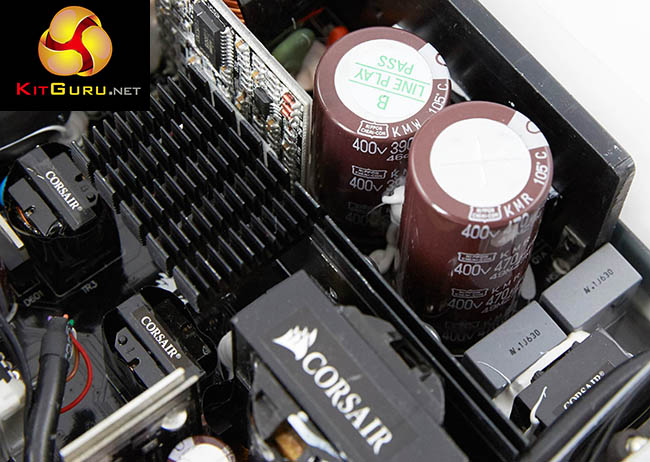
The Corsair NR135P Fluid Dynamic bearing fan is one of the best on the market and when tasked to deal with 500 watts or more it remains basically inaudible, even until the last 10% of power delivery. It is good to see Corsair improving their fan designs because some of their earlier power supplies could get a little intrusive under heavy load situations.
Ripple suppression rates as very good and well within industry rated parameters, even though the results are some way from the best we have seen in recent months. The internal CWT design incorporates high grade 105C Japanese grade Nippon Chemi Con capacitors, which is great to see for long term reliability.
While some readers tend to focus on 1000 watt+ monster power supplies for their system builds, this 750 watt unit is more than capable of handling a powerful dual SLI or Crossfire rig. We tested it in a real world environment with two GTX980 Ti's in SLi, alongside an overclocked 4790k with multiple drives and 16GB of 2666mhz memory, and it was rock solid.
The fully modular design will appeal to system builders using windowed case panels. It is good to note that the quality of cabling is excellent and while it could be considered as overkill for a media center, it does tick all the necessary boxes as the foundation for a high grade HTPC system.

You can buy the Corsair RMi Series 750 watt power supply from Overclockers UK for £114.95 inc vat.
Discuss on our Facebook page, over HERE.
Pros:
- high build quality.
- fully modular.
- low noise.
- technically very capable.
- 105c Japanese capacitors throughout.
Cons:
- Faces stiff competition from brands such as Seasonic.
Kitguru says: The Corsair RMi Series 750 is a well made, high performance PSU which delivers stable power. The internal design is proficient and the use of high grade 105c rated Japanese capacitors will help ensure long term reliability.

 KitGuru KitGuru.net – Tech News | Hardware News | Hardware Reviews | IOS | Mobile | Gaming | Graphics Cards
KitGuru KitGuru.net – Tech News | Hardware News | Hardware Reviews | IOS | Mobile | Gaming | Graphics Cards


